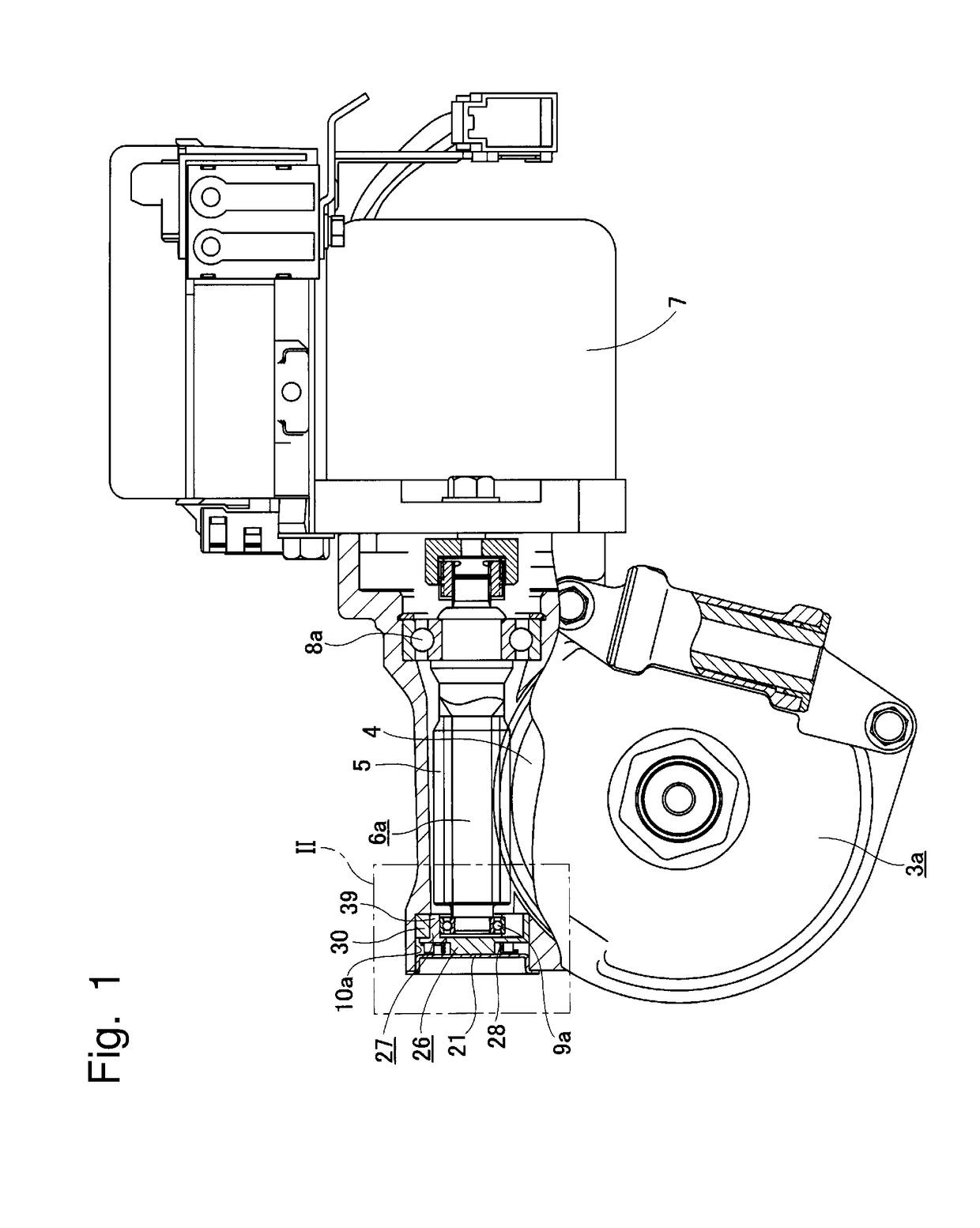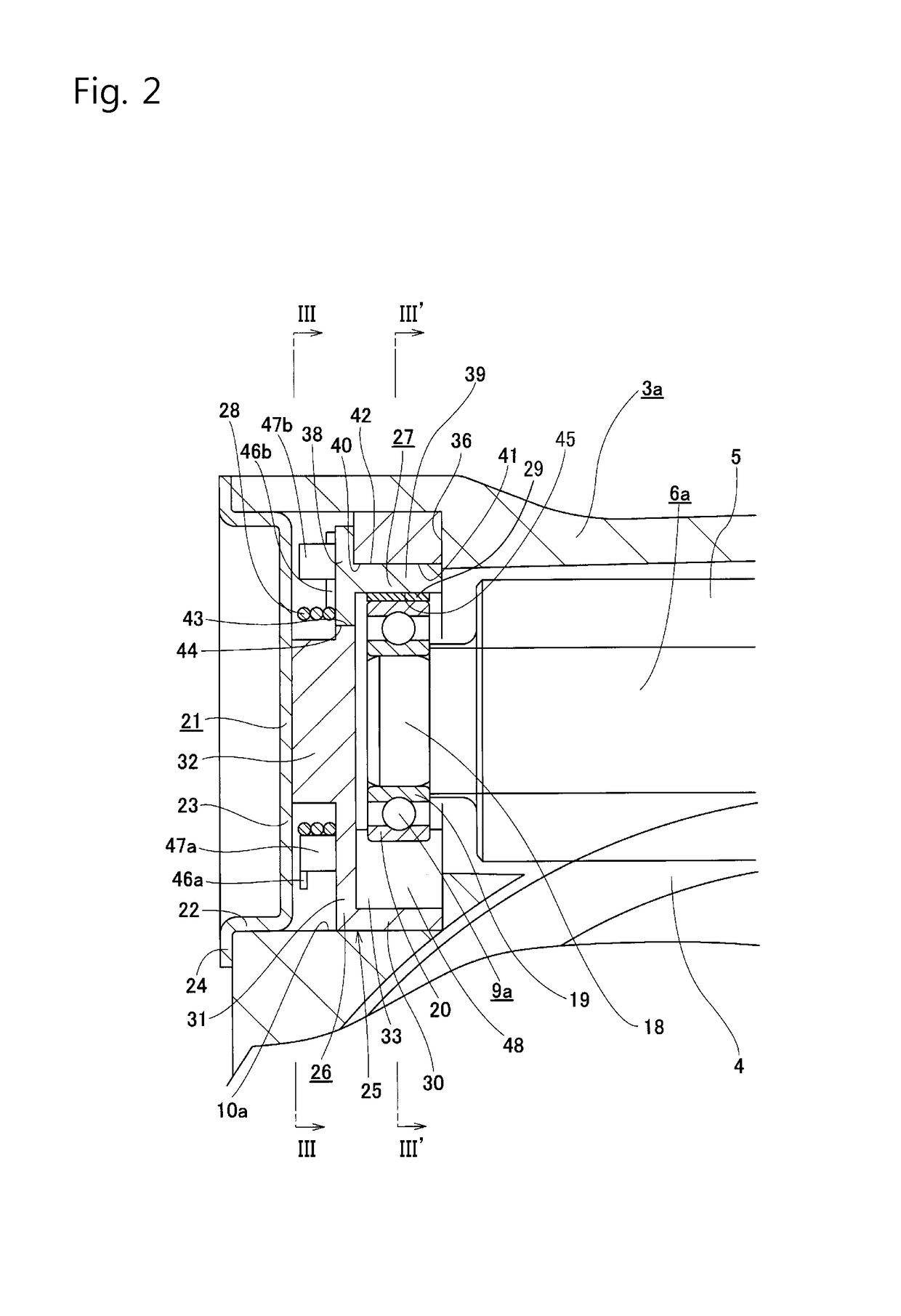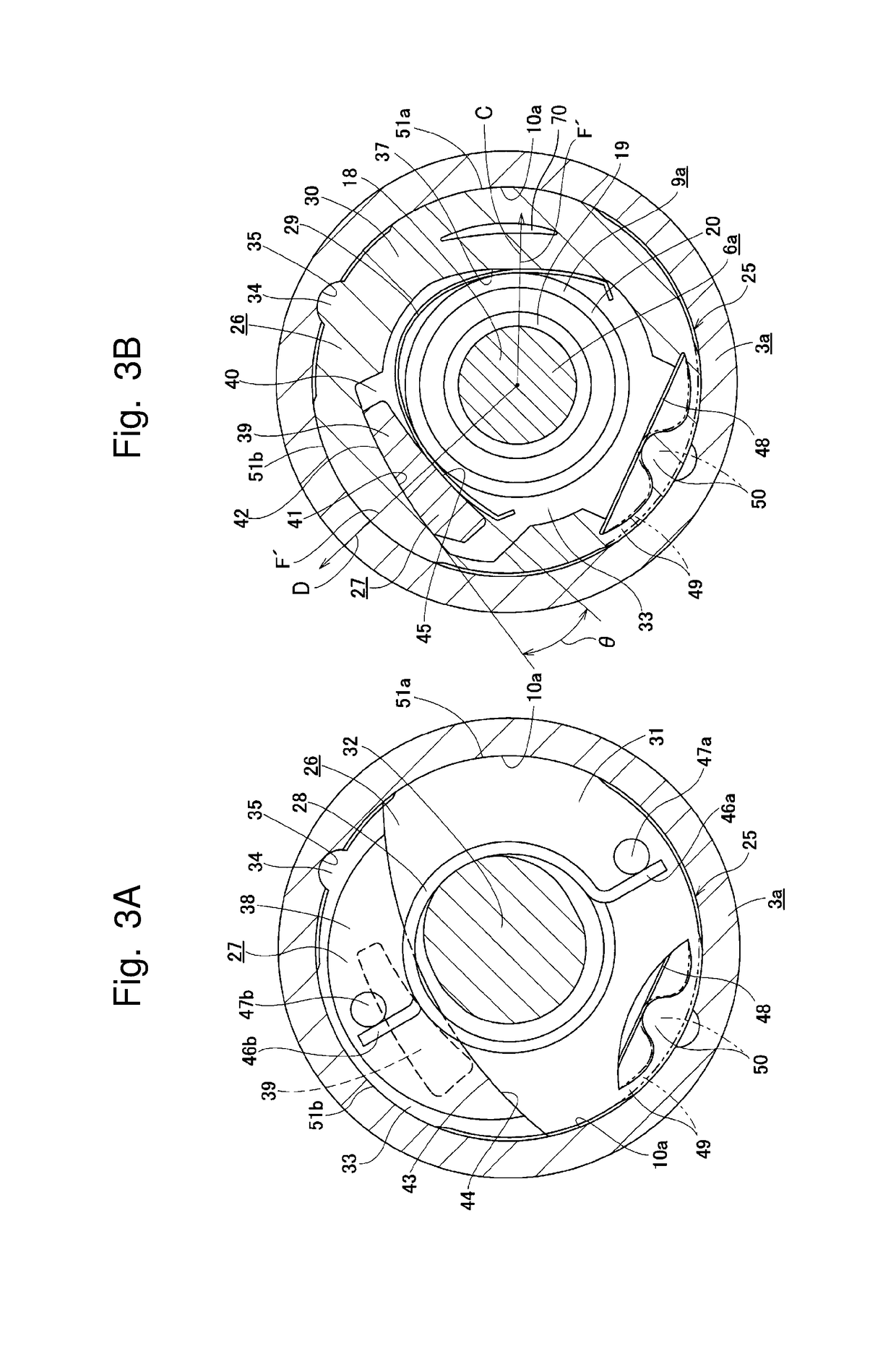Electrically driven power steering device
a technology of electric steering and steering wheel, which is applied in the direction of gearing, lifting equipment, transportation and packaging, etc., can solve the problems of tooth surface abrasion, dimensional error, and the amount of abrasion is on the increas
- Summary
- Abstract
- Description
- Claims
- Application Information
AI Technical Summary
Benefits of technology
Problems solved by technology
Method used
Image
Examples
first embodiment
[0059]A first embodiment of the present invention will be described with reference to FIGS. 1 to 4.
[0060]A characteristic of an electric power steering device according to this embodiment consists in that a structure of biasing mechanism for biasing a tip portion of a worm shaft 6a toward a worm wheel 4 is devised. The structures and effects of the other parts are almost the same as those of the structure according to the prior art that is illustrated above with reference to FIGS. 10 and 11, and thus the following description will focus on characteristic parts of this embodiment with the illustration and description of the identical parts omitted or simplified. Although FIG. 11 described above and FIG. 1 for this embodiment differ from each other in terms of the direction in which an electric motor 7 is mounted on a housing 3a, it can be appropriately changed on a design basis depending on in-car installation, and thus has nothing to do with the characteristic parts of the present i...
second embodiment
[0079]A second embodiment of the present invention will be described with reference to FIGS. 5 and 6.
[0080]In the case of this embodiment, the configuration of biasing mechanism 25a is different in several points from that according to the first embodiment described above.
[0081]In the case of this embodiment, the outer circumferential surface of the outer ring 20 is in direct contact with the guide surface 37 and the wedge surface 45 instead of the leaf spring 29 for a bearing (refer to FIG. 3) being disposed between the outer circumferential surface of the outer ring 20 constituting the tip side bearing 9a and the guide surface 37 and between the outer circumferential surface of the outer ring 20 constituting the tip side bearing 9a and the wedge surface 45. Instead, in the case of this embodiment, a guide piece 30a constituting a guide member 26a is loosely and internally fitted into the inner circumferential surface of the holding recessed portion 10a of the housing 3a (a minute ...
third embodiment
[0085]A third embodiment of the present invention will be described with reference to FIGS. 7 and 8.
[0086]In the case of this embodiment, the configuration of biasing mechanism 25b is different in several points from that according to the first embodiment described above.
[0087]In the case of this embodiment, as illustrated in FIG. 8B, each of a guide piece 30b constituting a guide member 26b and a wedge member 27a formed only from a wedge piece 39a is formed to have a semi-cylindrical shape, and the guide piece 30b and the wedge piece 39a are arranged at positions on the sides opposite to each other in the radial direction in the annular space 33 which is present between the inner circumferential surface of the holding recessed portion 10a disposed in the housing 3a and the outer circumferential surface of the outer ring 20 constituting the tip side bearing 9a. In this state, circumferential gaps are disposed between both of respective circumferential end faces of the guide piece 30...
PUM
 Login to View More
Login to View More Abstract
Description
Claims
Application Information
 Login to View More
Login to View More - R&D
- Intellectual Property
- Life Sciences
- Materials
- Tech Scout
- Unparalleled Data Quality
- Higher Quality Content
- 60% Fewer Hallucinations
Browse by: Latest US Patents, China's latest patents, Technical Efficacy Thesaurus, Application Domain, Technology Topic, Popular Technical Reports.
© 2025 PatSnap. All rights reserved.Legal|Privacy policy|Modern Slavery Act Transparency Statement|Sitemap|About US| Contact US: help@patsnap.com



